Bill Black pt 6/9 – The Best Way to Rob a Bank is to Own One
Bill continues his history of modern financial fraud in America. He says the dark side of “financial discipline”, is the Merrill Lynch’s and Goldman Sachs of the world don’t provide discipline. They provide cash. They fund the expansion knowing it’s crap because they know as long as it’s going up, they personally, not Goldman, they personally will make a ton of money. Bill Black on theAnalysis.news with Paul Jay.
Transcript
Paul Jay
Hi, welcome to theAnalysis.news. I’m Paul Jay and in few seconds, we’re going to continue our series of interviews with Bill Black on what he calls control fraud, and especially what led up to the financial crash of 2007, 2008, and we’ll bring it up soon to today because I don’t think that much has changed. So we’ll be back in a second. Please don’t forget there’s a donate button at the top of the webpage and the subscribe button on YouTube and the best way to grow this site is to share. So just share this with a couple of people every time you watch something and help us grow.
So we’re continuing our series of interviews with Bill Black on control fraud. We started with the Savings and Loan crisis in the 80s, fraud in the 80s, and now we’re up to around the period leading up to the 07/08 crash, especially the years 2003 to 2006 and before we get to Bill, once again, there’s a docuseries titled The Con, which breaks down very well what happened during these years leading up to and during 07/08. Here’s another trailer from the film.
MOVIE EXCERPT
“So part of the problem is this handful of institutions, large banks that were so big, and so interconnected that the failure of any one of which, had the capacity to bring now the financial system – to big to fail banks. And what happened in run-up to the financial crisis, is that these institutions had huge amount of exposed risk in the one area, the mortgage market. Mortgages, mortgage-backed securities, and these really estetaric securities that were created out of the mortgage-backed securities (CDOs, synthetic CDOs), a sort of alphabet soup of products, that all these big banks were all exposed to at the same time. And so how does that translate into a financial crisis?
Well normally, if a bank has very, very little of their own money, and is borrowing 97-98% of their money and only has couple percent of their own money at risk, and are taking huge, huge risky positions. At some point, lenders would stop lending them money. We aren’t going to lend you any more money because our money is going to be at risk. But, that doesnt happen at too big to fail. Because the market all presumes, and as we learned in 2008, presumed very correctly, that if any one of these institutions were to suffer those losses, they are still going to be able to pay back everyone because the government is going to step in and bail them out, and cover all of those debt payments. And so the normal functions of capitalism, which would say ‘Hey giant bank, you’re not allowed to borrow anymore. You need to get out of these markets where you are exposed to all this masssive mortgage risk’. Like that didnt happen.
What happened is, you have this giant bubble that was created by alot of fradulent activity, making huge profits, with little regard or worry about what would happen if the other shoe drops, because they were confident, the market was confident that government would bail them out. And that’s just a toxic cocktail. And so when these mortgages inevitably started failing, because they were so riddled with frauds, because they were not well underwritten, because they were, in many cases predatory, almost forced on the people who could never possibly afford to pay them. It was inevitable. It was going to collapse. And when it collapsed, what started as a snowball turned into a giant avalanche. And all of these institutions were so interconnected to one another that they started to fail. And so when these organizations, these banks were on the verge of failure they turtle up, they stop lending, and all of a sudden if you have an economy where nobody is lending anymore everything seizes up, that’s what drives the financial crisis.
Companies can’t borrow to run their businesses, people can’t borrow money to buy homes anymore, and with that, you have this contraction in the economy, this contraction in demand, and you have what you had in 2008 – a massive financial crisis, with a massive recession that was attached to it. As a result, of the greed of these institutions and the structural problems that allowed for the creation of institutions that are so big, so interconnected, it doesn’t matter how bad their decisions were, we as the American people had to come to their rescue and bail them out”.
Paul Jay
So now joining us to discuss the history and present state of what he calls control fraud is Bill Black, who is in the film and was an adviser to its producers. Bill is an American lawyer, academic author, and a former bank regulator with expertise in white-collar crime, public finance, and regulation. He’s the author of the book The Best Way to Rob a Bank is to Own One. He’s an associate professor of economics and law at the University of Missouri, Kansas City. Thanks very much for joining us again, Bill.
Bill Black
Thank you.
Paul Jay
So let’s pick up the story. I think we got into 2003, 2006, and I had been asking you how significant to the crash was the repackaging of all this by the big banks, all this being what was called toxic assets, liar’s loans that were packaged in enormous quantities together and then resold by the big banks in New York to banks all over the world, even to other banks in New York, by the pension funds and you name it, all sold as being reliable investments, which was all part of the fraud. So pick up the story.
Bill Black
OK, the key is exponential growth. That exponential growth, when you start out really small, which is this one survivor, Ameriquest in 1994, going to the shadow [banking sector]. It’s growing really rapidly, 50 percent a year, but it’s a small institution. This is the blade of the hockey stick period, where it looks like the problem is expanding, but, it can’t become a crisis. Then a whole bunch of other lenders follow the same tactic. Plus, you simply get large enough that 50 percent growth is huge growth and this is the period 2003 through 2006 that is the hyperinflation of a housing bubble. This is when the bubble goes absolutely crazy. This is when the growth of fraudulent loans almost entirely explains the growth of the housing market. Liar’s loans, which have a 90 percent fraud incidence, according to the industry’s own anti-fraud experts, in their 2006 report, grew by over 500 percent in three years. They become the dominant form, well over a million liars’ loans are made every year with again, with a 90 percent fraud incident.
Paul Jay
Really quickly, just in case there are some people that didn’t listen to me when I said maybe I forgot to say at this time, go back and watch the first parts of the series because all this will make more sense, but just in case, again, quickly, what’s is the liar’s loan? What what are these predatory loans?
Bill Black
OK, so liar’s loans, not the same as predatory, but that’s a good thing to bring up. So liar’s loan is when you don’t verify the borrowers’ income. Sometimes they didn’t even verify their job. Sometimes they didn’t even verify their assets. No income, no job, no asset, a ninja loan within the trade, right. There are actual ads with the three monkeys, standing for see no evil, hear no evil. Usually, in advertising, you don’t want to associate yourself with the concept of evil, but those were the ads that Greenpoint used to get the idea across. Yes, folks, we are here to lie to help you to lie. We will buy all the crappy liars’ loans that you can possibly induce people to do. All right. So this is nuts, right? No honest lender would do this because, of course, if the borrower’s income is massively inflated, then the borrower is much more likely to default on the loan. The idea is to fraudulently make the loan appear particularly non-risky, and so if I inflate the borrower’s income and the average was to inflate the borrower’s income by more than 50 percent, then I can make a loan that’s going to be a disaster look like it is a prime rose and I can get paid a premium in the markets in these circumstances. Similarly, how do I make a loan that doesn’t look particularly safe? I extort the appraiser to dramatically inflate the appraisal, then I can make a larger loan, I get bigger fees for all of that and bigger fees when I sell it.
Now, if you know nothing about the great financial crisis but think you know, then you’ve been told this is all about the secondary market sales. That they have no skin in the game, nothing to lose – the loan originator – because he’s just going to sell the crap to other people. They’re catastrophic problems with that lie. One is, well, in fact, they did have skin in the game. All the contracts still provided that they had skin in the game and indeed they failed because they had skin in the game, but remember, the failure of the bank is not a failure of the fraud scheme because, again, the title Nobel Laureates in Economics, George Akerlof and Paul Romer, in 1993, agreeing with us about what the fraud scheme was driving the savings and loan debacle was “Looting: The Economic Underworld of Bankruptcy for Profit.” The bank will fail, but the people that run the bank will get very rich. Okay, so the first problem is actually they always did have skin in the game.
The second problem is what if they had no skin? We’re supposed to believe that everybody in finance is so stupid about finance that they can’t figure out the perverse incentive you would have if you had no skin in the game, whereas you’re taught in finance from day one that it’s the most important thing. There is no such thing as a fraud exorcist. Once you originate, that means make fraudulent loans, you can’t make them un-fraudulent. It will forever be fraudulent. They will transmit through the system and that means to sell fraudulent loans you have to make additional frauds. You have to make fraudulent representations and warranties, or reps and warranties as they’re called in the trade, to the buyer. You can’t go to buyers and say hi I want to sell you fraudulent loans. That doesn’t work. So you have to pretend that you are making loans in accordance with your written loan standards, when, of course, you’re doing nothing in accordance with those loan standards, and that’s called fraud. So, yes, there is fraud in the secondary sales, but then you have to ask yourself, why are buyers buying stuff that everybody knows is massively fraudulent? Everybody in the industry knows. Hell the industry calls them liars’ loans, and subtlety is a fraud scheme, right? This is not art. This isn’t even fraud 101 this is fraud 1.
So why are they willing to buy it? Why does the same fraud scheme work for the originator, the person that makes the loan, and the buyer?
Paul Jay
These buyers are sophisticated organizations, people that run pension funds, people that run banks. These are not. They didn’t come off the street and get sold something.
Bill Black
They are, in fact, overwhelmingly the most financially sophisticated people in the world, because while you are right, the pension funds would buy some of these things, the original buyer almost always was an investment bank. The investment banks, these are folks that get paid $250,000 plus bonuses their day out of school because they are allegedly the creme de la creme of the world and they have all the sophisticated research departments and such. So they all know this is crap, but as long as nobody says it’s crap, all of us, all the officers in this chain, this food chain that, as you see extends and then extends beyond this, because then we get into financial derivatives off of these. We’re just talking about mortgage-backed securities right now, but then mortgage-backed securities are financially engineered into CDOs (collateralized debt obligations), and then they are supposedly backed by credit default swaps. So there’s level after level after level and at every level, as long as we follow the financial version of don’t ask, don’t tell, and pretend that pure crap is AAA, then all of us get immense fees.
Bill Black
Now the firms are going to lose huge amounts, pension funds if they buy it. German cities, little banks, and state-owned banks in Germany. Yes, the fraudulent resale of mortgages doesn’t add to the amount of fraudulent underlying loans, but it redistributes the losses and it can redistribute those losses in ways that are really important and really painful to lots of folks. There’s actually in the scope we’re talking about a relatively tiny amount of absolutely new product created in the process which is itself also fraudulent, and those are called synthetics. So in addition to regular CDOs and CDO-squared and CDO-cubed, which are monumentally more insane. They’re also synthetic CDOs.
Paul Jay
OK, just to make sure for someone who doesn’t know what a CDO is at all, 30 seconds. What is a CDO?
Paul Jay
Take the cash flow for mortgages. Mortgages provide cash. When we pay our monthly fee or if we pre-pay usually when we refinance or sell the home a cash flow is allocated on a tiered basis. In other words, different priorities among different kinds of investors, and 80 percent of them are at the top and they get first dibs on the cash flow. So that’s how a CDO works. It takes many, many mortgage-backed securities. In fact, the estimate is it has over a billion pages of legal documentation, once you get up to a CDO-squared, which is to say, no one, of course, ever reads all the crap in this because no one needs to. Again, it’s a financial version of don’t ask, don’t tell. As long as you pretend this stuff has value, we all got our fees, and again, the best estimate of fees involved in all of these kinds of mortgage paper, everything we’re discussing is a variant of mortgage paper, what are $2 trillion. So tons and tons of elite, white collar-ish folks that look like me, except they dress a lot better in more expensive suits, made millions each out of this. So are you going to say, excuse me, none of this is real, this is going to be a disaster. We shouldn’t sell this to pension funds and such. Not so much because then the gravy train stops.
So synthetics are even weirder. I can create what is allegedly the same kind of risk as a CDO by doing yet another instrument called a credit default swap. Now credit default swaps are fake insurance and you can use them to short securities. So you can create sort of an analog to the risk of a CDO by using CDS and again, CDS (credit default swaps) are what destroy AIG, the largest insurance company in the world, which of course all of us as taxpayers got to bail out. But we left the upside overwhelming to AIG, not to the American people, of course.
So there were some actual increases of exposure through the creation of the synthetics, but in the grand scheme of things, they were tiny compared to everything else. So, again, overwhelmingly, the secondary market is not the cause, and indeed, in many countries, such as Ireland, where they had a residential bubble that relative to GDP was more than twice as large as that of the United States. They had simultaneously a commercial real estate bubble and there were virtually no secondary market sales. The alternative is to simply keep it in portfolio. You keep owning it and you keep overstating its value and then all you have to do is grow rapidly. How hard is that with deposit insurance? When they deregulated interest rates under Carter and Reagan? They probably inadvertently, though, you never know fully, created a catastrophic system where any bank with insurance, federal insurance could grow to virtually unlimited amounts, because if we’re fully insured by the federal government, what do we care about the quality of the bank? All they have to do was offer us an extra 15 basis points. That’s fifteen one-hundredth of one percent of interest more and our loan broker deposit brokers will automatically [inaudible] bank in the next day, that teeny tiny bank will have $4 billion more or $40 billion or $400 billion. So this is a fraud scheme.
Paul Jay
So if I’m getting this right. Let me actually just say this. If you’re watching and listening and you’re finding all these various derivatives and CDOs and synthetics, if you’re finding all that hard to understand and confusing, that’s the point. It’s supposed to be hard to understand and confusing for ordinary people. It’s supposed to just be these financial geniuses that actually understand it, but the real point, it’s all built on a foundation of fraud, which you can understand, which is you’re inflating people’s incomes, you’re inflating the value of the property, and then the financial sector is figuring out a way to skin that cat once, twice, three, four times.
Bill Black
By every step, at every step of the process.
Paul Jay
And let me correct something I just said, because while it’s happening within financial institutions, as Bill keeps reminding me the profits is going to the individual bankers and the institutions themselves while they’re at risk, well, it turns out they’re not really at risk because they already control the federal government. They wind up, on the whole, getting bailed out. Before we get to that part, though, let me just ask you. Let’s pretend it’s all real. There’s a very important actor that you just mentioned the name of in this theater, and that’s AIG and the rating companies who are insuring and rating these packages as AAA. They’re calling them perfectly safe, right?
Bill Black
Yeah and by the way, this is why The Con is 16 hours or more at length to actually be able to explain all of these things in an understandable way to a lay audience and such, but, yeah, that’s absolutely right. The critical thing that you need to know is that at every step of the way, as long as you don’t tell the truth, it’s a sure thing. It’s a sure thing because in addition to the arcane stuff we’ve discussed, and you’re quite right, the idea is so that our eyes will glaze over and the politicians’ eyes will glaze over and they’ll refuse to do the hard work to learn how the con works and how to stop it, which is why in one era when the regulators actually regulate it and we actually created the prosecutions we were able to contain essentially the same thing. Three hundred raging frauds, that’s about how many frauds there were in this case, and of course, you’re right in general, but you’re focusing on the super-powerful banks.
There were tons of non-super powerful, non-politically astute bankers as well. Their banks failed. They were not bailed out. So we bailed out roughly thirty and we let roughly three hundred fail that weren’t so big that they were too big to fail. So it’s a mixed bag in those terms, but all of it’s a bad bag. The treatment all along the way, either the firm dies through this fraud and potentially all kinds of dominoes fall in the system or we have to bail them out to save them. In either event, we’re the sucker in the market and that’s how they treat us and not a lot of senior government officials are actually willing to listen to this arcane stuff and learn not just about CDOs, but learn about accounting, because that’s where the real magic is. That’s why it’s a sure thing. When you try to talk about accounting to people, they run from you in horror.
Paul Jay
If you try to talk to politicians about accounting, they say, oh, let’s bring in the experts and they’ll get the financial sector that engineered all this to tell them what to do.
Bill Black
Yeah, that’s the nicest interpretation of what happens.
Paul Jay
So now we’ve got the underlying fraud picking up steam as we head into 06 and then before the whole thing starts to crash. Now, if I understand it correctly, as these loans get repackaged and work themselves up the banking food chain to the bigger and bigger institutions who start having enormous amounts of these toxic loans on their books, at some point the banks look at each other and they’re always loaning money from each other as part of just how they do business and short-term capital and so on, but at a certain point, they look at each other and say, well, hold on, if I loan you money, I know most of your assets are BS, and then the other one says, yeah, but you want us to loan money to you and we know most of your assets are BS, and at some point, they don’t want to loan money to each other. Is that kind of where the thing finally…
Bill Black
Yes, so as long as the bubble is expanding from 2003 to 2006, it’s entirely liars’ loans. Subprime is actually falling after a while. Regular loans are falling. What is keeping the hyperinflation going? Why is that critical? Because as long as supposed market prices are rising, then the poetic saying in the industry works, a rolling stone gathers no loss. You just refinance it. Then again, remember, the art is to make these loans, which are hyper-risky. They’re so risky, they’re going to lose money for the bank. You try to make them look like they’re super safe. Well, how do you make sure? We define a loan as safe if it isn’t defaulting, but if we just refinance it, we can make incredibly crappy loans look safe, and then as you say, sooner or later the music will end.
Paul Jay
Why?
Bill Black
We can’t hyper-inflate the bubble anymore.
Paul Jay
Why?
Bill Black
That appears to be psychological with people eventually. In the books, for example, there’s a really good description – again, Michael Hudson in The Monster – of real estate guys, these are the guys with the model homes trying to sell the development homes, and then just one day instead of when Saturday comes, instead of having twenty-five people and there are none, they call their friends and they’re none. So what had actually happened, when I say psychological, we realized with some great delay. So the first thing that happens when real estate values start to fall is not much of anything because we don’t want to take losses as homeowners. So we refuse to sell, and so the first thing you see is that market sales simply decline and the average time that a home is on the market before it sells, gets longer and longer, but then after six, nine months, more people have to move, right? They have to take that job on the other side of the country. So they have to sell and the only way they can sell is at a loss and then again, at some psychological level, people go, wait a minute, homes can go down in price. Homes can go down in price a lot.
Paul Jay
Yeah, people didn’t believe that for quite some time.
Bill Black
Right and that’s, by the way, normal globally. That’s not something unique to Americans. We’re pretty naive in finance jargon about our own investments as regular people. We hate to take losses on the home. So we’re very resistant, and then, as I said, eventually people look around and they’re saying, no, this isn’t real estate owning lots of homes, flipping them. This is not the way to profits anymore, this is a way to disaster, and those that invest the smart money start pulling back. I knew the disaster was imminent when I went to Las Vegas and every cabbie tried to sell me a home. They had a real estate agent, they owned two to three homes themselves. Cabbing was just a way to meet people to pursue their real estate careers. That’s not tenable. That tells you it’s on the last edges, but we don’t really know what pushes to that day. That fabled Saturday when the buyers essentially go on strike and say, no, you’re crazy, but you’re absolutely right about the next point.
This is the dark side of private market discipline. Again, this is why conventional economists claim that deposit insurance is the Great Satan. That it unhinges private market discipline, because the creditors, overwhelmingly, of insured banks, are us, the depositors, and we’re fully insured. So why should we try to become the world expert on Ameriquest and whether it’s a good bank or a bad bank? The dark side is the Merrill Lynch’s of the world, the Goldman Sachs, they don’t provide discipline. They provide cash. They fund the expansion knowing it’s crap because they know as long as it’s going up, they personally, not Goldman, they personally will make a ton of money. So my metaphor is we’ve all gone to a picnic or a birthday party where everyone got a bottle of water and how many of us would drink that bottle of water if we knew that one in one hundred had been tampered with? It was unsafe. Long before fraud becomes recognized as ubiquitous, as soon as it gets in the consciousness, as you say, the banker suddenly looks and goes, oh f***, what if they’re doing what I’m doing? They know they are, and so they say, not in this place, mister. No more. I’m not going to buy your crap anymore. As soon as they stop buying, then market makers begin to fail. So people don’t much know about this category of folks. I think that when you want to sell stock, there must be somebody on the other side of the trade that wants to buy the stock at that same price, but even for really big companies with bazillions of shareholders, that’s not true at particular times of the day. For most stocks, it’s not even remotely true, and so we have these specialist companies that are way below the radar and they make markets they buy, they’ll take the other side of the transaction. If you want to sell your stock, they will buy. Well, that’s fine, but what if you want to sell your stock because you know it’s crap? It’s based on all these fraudulent mortgages that we talked about. Well, the market maker buys and say they buy at $16, but then more and more of us try to sell. So what happens to the price? It collapses from $16 to $8. Well, now the market maker, which is a relatively tiny entity with not much capital, has bought all this stuff, this crap at $16, which is now at $8. So what is it? It’s insolvent and so the market makers start to fail in these circumstances. That means that when you put in a bid to sell something (an ask) and nobody is on the opposite side. And if you can’t sell an asset. What is it worth? Its supposed market value was $16, but now I can’t even sell it for $4. So markets tend to overshoot in the down direction as well. You got it exactly right, it’s because buyers strike and they strike because they don’t trust the sellers anymore because the sellers look a whole lot like them in the mirror and their portfolios look exactly like them. They have seen the enemy and we are them.
Paul Jay
Most of this goes on, the period we’re focusing on during the Bush Cheney administration. We’re coming to the end of that administration. These guys that are at the top at these financial big institutions, as far as I can understand, are really damn smart. Many of them, I think, are probably sociopaths, but that doesn’t preclude being really damn smart. They got to know that there’s a cycle to this. They can start to see it coming. The Obama administration’s coming in. You can get into a little bit how Lehman Brothers are the one that gets the ball rolling, if I understand it correctly, but I’ve always thought that Obama was what’s the word, nurtured, from very early on by finance. He got a lot of money to his campaign by the financial sector. He comes in and he’s just the right guy at the right time when it’s time to bail them out. They must have known all along that they were too big to fail, that they could blackmail the American people really is what it amounted to because if they weren’t bailed out, unless they started nationalizing some of these big banks, which is what they probably should have done, the whole thing would have unraveled. There must be some consciousness on their part in how the next acts unfold.
Bill Black
Well, again, remember, we have to be careful about the “they”. So the “they” is not the companies. The companies are not human. They don’t get to make decisions. They don’t have fears or abilities. So as I said, most of the perpetrators are going to go bankrupt. Their banks are going to go bankrupt, but they’ll walk away rich. So the question is, are they going to be prosecuted? Because if they’re not, it’s just, again, a sure thing that people who are not particularly bright. This is not Wall Street. This is Ameriquest, this is Countrywide.
Paul Jay
But isn’t it by this point, all the big players are now involved. I mean, the food chain goes up to Goldman and the rest of them.
Bill Black
Sure, but Ameriquest around 2006 is the largest maker of fraudulent loans in the world. This little tiny place, the one entity that escaped to the safety of the shadow financial sector that was unregulated, if you let it grow for 14 years, again, it looks like a hockey stick. So it’s up there in the making nearly one hundred billion in fraudulent loans every year. One institution. So there are tons of folks like that. Countrywide was going to be too big to fail, but it was actually bailed out through a private purchase with some government backup, but what those people fear, they don’t care about what happens to Ameriquest. They only care what’s going to happen to them. It’s irrelevant to them whether it gets bailed out or not and they correctly assessed that they had very little risk. Now, that’s remarkable in some ways because in the savings and loan debacle, there were well over a thousand convictions and they were targeted at the most elite. Then what came next was the Enron era, where they were financially even more elite than the savings and loan folks. There were roughly eight hundred successful felony prosecutions of those people. So if you went in predicting, you should have been predicting that there was a significant danger that you would be prosecuted. Similarly, as I mentioned, until we get to Bear Stearns, which is early 2008, we had never bailed out with government funds an investment bank. That was a no-no, and there’s no reason to bail out an investment bank, you can let them fail, right? They’re not federally insured, went the logic.
When we say they knew this was going to come. Well, maybe, but you had to be really damn prescient that things would change. Now, that brings us to Obama and people like him. That’s interesting in itself, right, because Obama as a senator, remember, he’s only a one-term senator, but as a one-term senator he had the highest rating in the standard liberal scores of any U.S. senator in America, and he talked about how banks were under-regulated and that we needed more resources to prosecute as a junior senator. So that part you wouldn’t think would make him the obvious champion. Plus, the Clintons, remember, you’re right, the biggest growth occurs under Bush 2, but all the antecedents are under Clinton. So in 1994, when Ameriquest is allowed to escape to the shadow and the Fed has all the authority to close it down and Alan Greenspan refuses to do so. Well, who reappointed Alan Greenspan twice? A rabid Ayn Rand type. Bill Clinton reappointed. Just insane, just like Obama is going to reappoint Bernanke, the world’s greatest failure as a financial regulator, and give an enormous promotion to Geithner, who was supposed to regulate the biggest Wall Street banks and absolutely refuse to even try to do that. The Clintons, by contrast, both of them enormously good to banking throughout their entire careers. People forget what started the Whitewater investigation. A criminal referral by a bank regulator. What do you think Bill Clinton thought about us? The instant view he had was these are the people that made my life a living hell. So he hated regulation with purple passion. He cut the FDIC staff by more than three-quarters. He cut the OTS staff by more than half. He launched an unholy war against regulators. In the first speech he ever gave to them, he denounced them, saying he heard terrible things from campaign contributors about them. He openly talked about those kinds of things. In that light, after decades of service by the New Democrats, and again, both Bill and Hillary were independent forces in the New Democrat movement, which is the Wall Street wing of the Democratic Party, and is openly the Wall Street wing of the Democratic Party. They turned their backs on 20 years of favorable service by the Clintons and went with a junior senator who was black, which was relevant to the prospects of winning the damn election because at the point they switched, everybody thought Hillary was a lock on the Democratic nomination and likely a lock to win the presidency.
So in political science, you’re taught you don’t screw them in those circumstances, but we know that Obama, even at this early time, had people who were vouching for him with Wall Street. So one of them will become his chief of staff, right, [William] Daley, another one of them will become the mayor of Chicago, Rahm Emanuel. A third, the Pritzkers, notorious predatory lenders. We haven’t really discussed the whole predation thing yet, just awful, awful people, completely the inner circle of the Obamas. So some or all of those three people clearly had the most amazing elevator pitch in the world, because they went to bankers who were mutually in the pocket with the Clintons, and to the extent, they weren’t with the Clintons had historically been for Republicans and for the first time in modern history finance swung and gave Democrats more money than Republicans and gave it overwhelmingly to Obama instead of Clinton. So someone was able to go to Wall Street and was believed by Wall Street that this [Obama] is our guy.
Paul Jay
Absolutely. And who do you want to be the face of bailing out Wall Street, Hillary, or the guy with probably the best smile since Ronald Reagan and maybe better than Reagan’s. Obama is the guy that could sell the bailout. Hillary would have been a disaster.
Bill Black
But again, they swung back against Obama, even though substantively he delivered enormously for them in that there were literally no prosecutions. I don’t mean no convictions. I mean no prosecutions of any of the elite bankers who led any of the three fraud schemes that drove the great financial crisis, but when he used that phrase fat cats, I wasn’t elected to bail out a bunch of fat cats. It was like they were back to being 12-year-old males in junior high school in America. He called us a fat cat. How dare he do that? And so the money actually swung to the Republicans in his second race. So they really demand you be beholden to them. It isn’t enough that you deliver on substance. They want you to talk the talk, not just walk the walk for them.
Paul Jay
I know a guy on Wall Street who’s a midsize investor and donates to the Democrats. He was asked to donate to the Obama presidential campaign in the year 2000. They were nurturing this guy for quite a while, at least that’s what he told me, I had no reason not to believe him. All right, we’re going to pick this up in the next segment. We’ll talk about the Obama era. The too big to fail we’ll get into predatory lending and the rest. So please join us for the next segment of our series with Bill Black on theAnalysis.news. Please don’t forget there’s a donate button. There’s a subscribe button on YouTube. Share the stories and we’ll be back with the next installment of this drama.
Podcast: Play in new window | Download
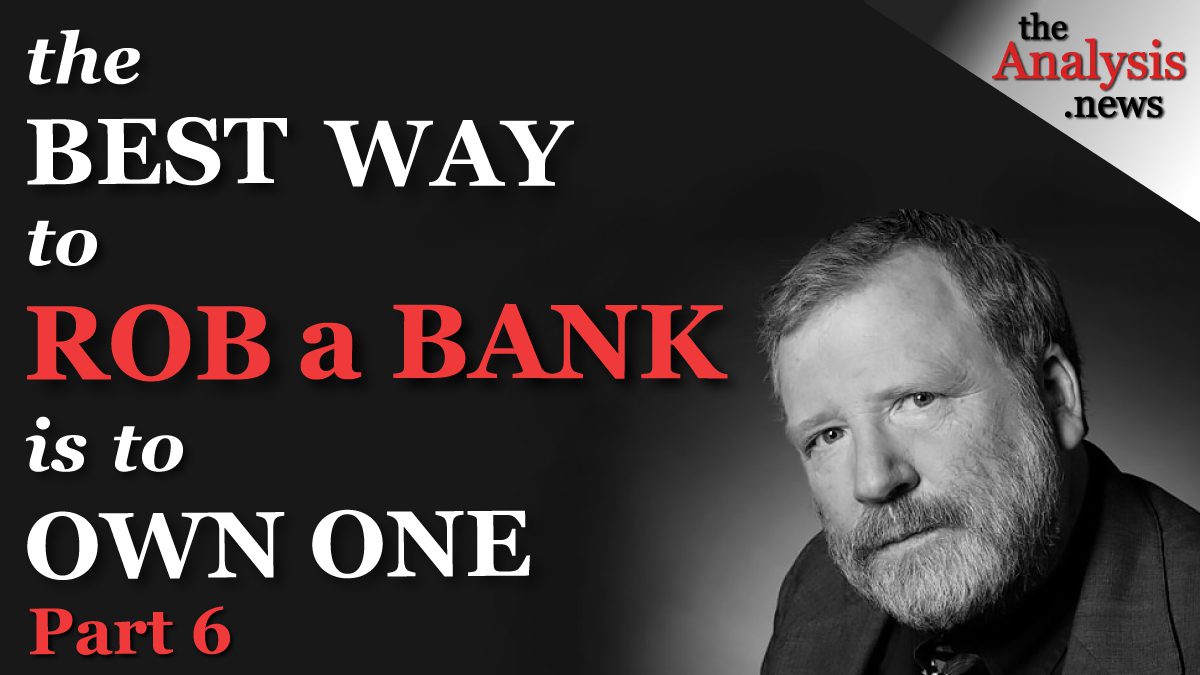
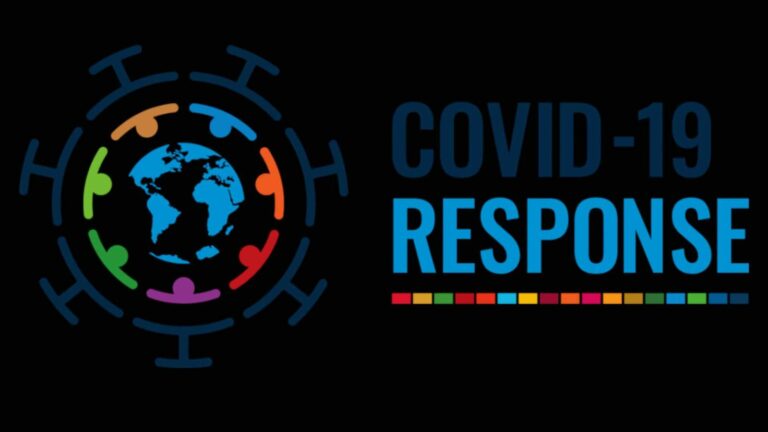
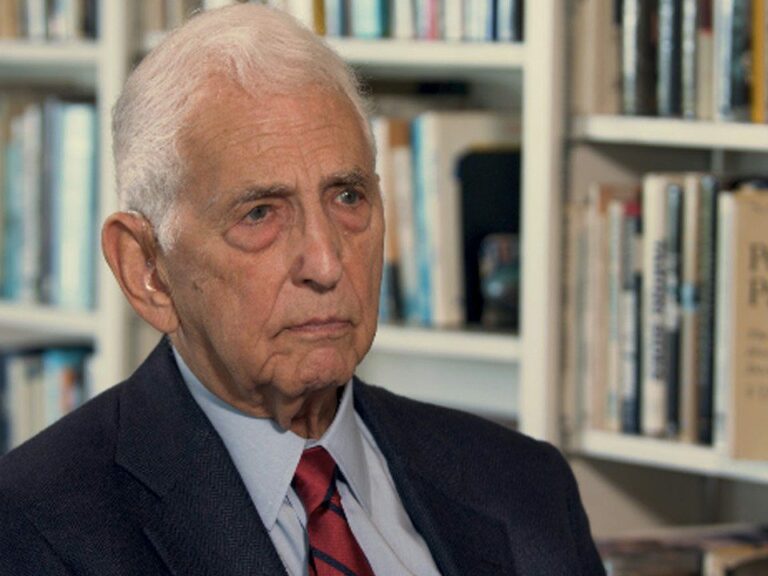
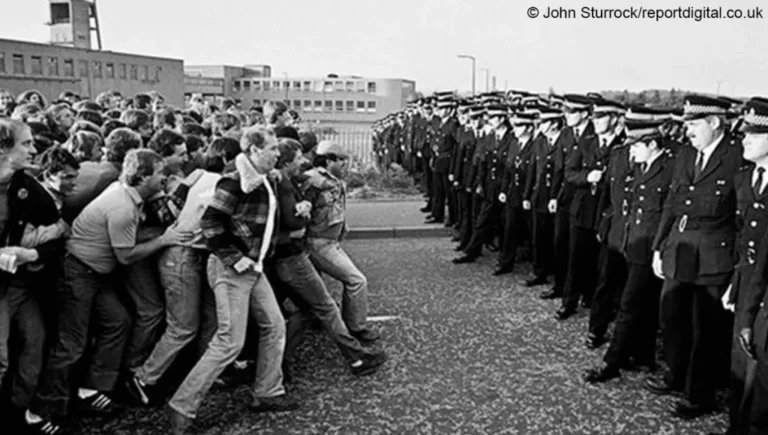

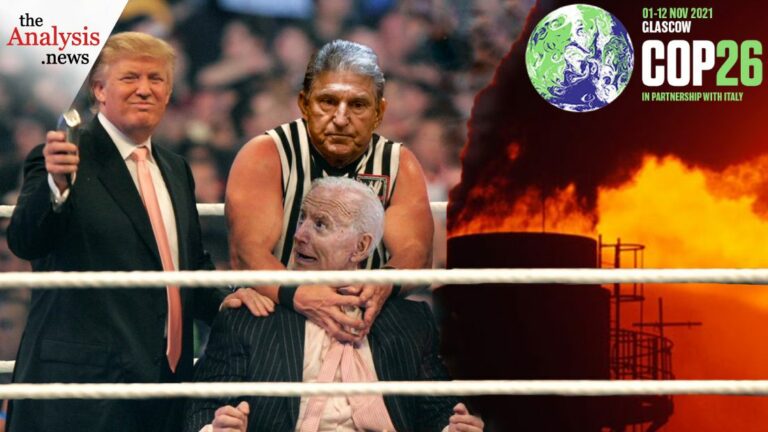
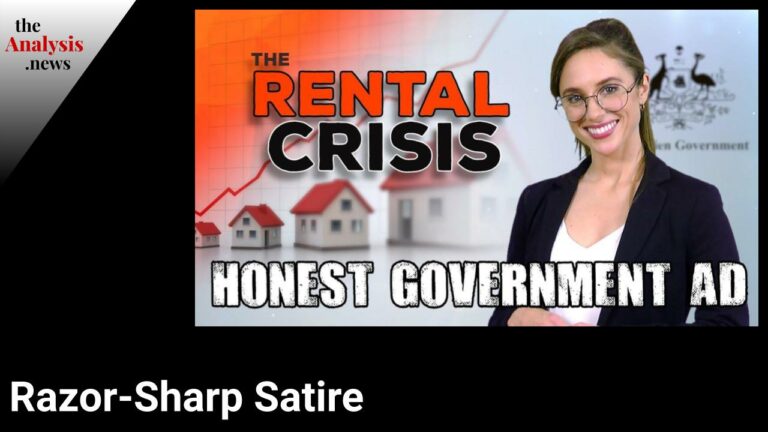
I am confused: Bill Black says the secondary market had little to do with the hyper—real expansion of fraudulent mortgage loan originations, and claims this unreal expansion subsided for what he somewhat desperately calls psychological reasons, but then clearly attributes the acceleration of the crisis to the sudden seizure of especially smaller market makers—secondary market participants par excellence—to match trades once the psychologists had abandoned ship. I have commented previously to the effect that the voluntarism bias of Black’s notion of control fraud is interesting in an offbeat way, but lacking in structuralist rigor, and have wondered if the missing link is the too big to fail behemoth; but now I am just confused; can someone clear this up? Once again: I understand the unique appeal the ubiquitous fee system made to fraudsters who recognized a likewise unique way to profit from penury, but do not see how this analysis bridges from psychological speculation to systemic crisis of a sort that those of us who have become inured to the very idea saw it crystallize right in front of our noses in the most frightening way imaginable, and reversed, to whatever degree, only by taking the most unacceptable means—according to prevailing orthodoxy, at least until they had to repeat and expand the same exercise a year ago.
With due respect to Mr Black’s efforts, he seems to lack a necessary clarity of expression, necessary to the task of explaining and answering Mr Jay’s questions. As a physicist, I have in my studies had to deal with ideas and theories removed from the every day observations and experiences of life. Still, I found, thankfully, that physicists who preceded me were able to combine insight with expression and teach, orally or in texts, those seemingly arcane ideas. Mr Black does not seem to have that ability, at least not in the present interview.
He does convey well the fact that the American taxpayer was defrauded (along with his children and grandchildren!) by a collection of thieves who populate and dominate the business world and every level and branch of our government.
Mr Laurence Peterson tells us that he is confused by Mr Black’s explanation of the of the expansion of the fraudulent loans. Though I, too, find Black’s attempts to clarify the instruments of the frauds unhelpful, Peterson’s comments also do not help. Such linguistic constructions as hyper-real, voluntarism bias, psychological speculation, structuralist rigor, do not help. They are unfamiliar. In making argument in common language rather than symbolically – as in maths – I find short sentences and commonly understood word combinations the most successful.
I try not to exhibit a style; instead to remove stylistic distractions and just make the argument.
In other words, remove the bull-shit !